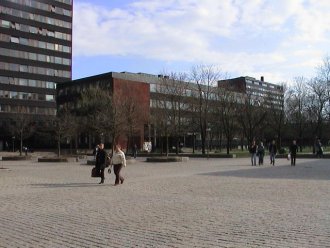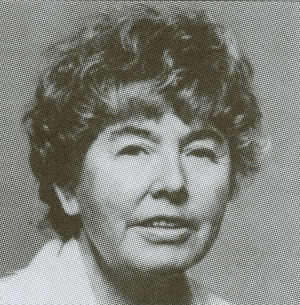We moved to newly renovated premises in Harriet Holter's House (the old C block of Eilert Sundt's House) in 2003. Today there are 66 academic staff and 11 administrative staff at the department. The department offers 39 courses in sociology and 22 courses in human geography.
 A brief history
A brief history
- 1950: The department of sociology is established under the faculty of humanities 7 January
- 1963: Incorporated into the new faculty of social sciences
- 1996: The merging of the department of sociology and the department of human geography
- 2003: The department moves into newly renovated premises in Harriet Holters House.
Who was Harriet Holter?
 Harriet Holter (1922-1997) was the pioneer of women’s research in Norwegian social science. Her academic breadth spanned the whole spectrum of social science. She was educated as an economist, became a professor of psychology, yet most of her research is best classified as sociology. In the early 1950s she became a prominent voice in Norwegian research on work and industrial relations. The contribution of employees in decision-making processes and the relationship between employees and their shop stewards and union representatives were central themes.
Harriet Holter (1922-1997) was the pioneer of women’s research in Norwegian social science. Her academic breadth spanned the whole spectrum of social science. She was educated as an economist, became a professor of psychology, yet most of her research is best classified as sociology. In the early 1950s she became a prominent voice in Norwegian research on work and industrial relations. The contribution of employees in decision-making processes and the relationship between employees and their shop stewards and union representatives were central themes.
This work was patently rooted in gender relations. The large Nordic collected work Kvinners liv og arbeid (1962) [the lives and work of women], for which Holter was a central contributor, set new standards for studies of gender roles. The connection between gender and work was approached from a new direction in a study of the role of housewife. Many of the threads ran together in the larger work Sex Roles and Social Structure (1970), one of the works of Norwegian social research that has received the most attention internationally. Based upon extensive empirical studies Holter developed a general theory about gender differentiation and gender roles. She drew out and clearly defined the basic norms for gender roles, and she pointed out mechanisms that reinforced existing role patterns. But gender roles are not static. There are variations between the opinions of women and men, between social classes and between urban and rural areas. Conflict and change are the hallmarks of role patterns, also those role patterns that concern gender relations. In Familien i klassesamfunnet (1975) [the family in class society] the variation in gender roles between the classes is expanded upon.
Harriet Holter was a driving force in the growth of women’s studies in Norwegian social science from the beginning of the 1970s. She inspired many and she contributed to studies of sexualised violence, a field that later has become important and productive.
This content is translated from the book: Introduksjon til samfunnsfag.